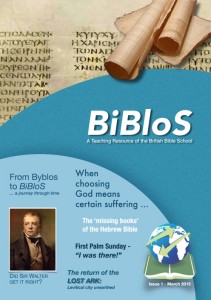“… everything written about me in the Law of Moses and the Prophets and the Psalms must be fulfilled.”
(Luke 24:44 ESV)
Are there really 39 books in the Old Testament? Well if the question is asked at your local village quiz, that might be the safest answer to give. But is it really correct?
You might have been told that there are 39 books in the Old Testament – you might have even counted them for yourself – but were you to have lived in the days of Jesus then you would have seen things differently.
Firstly, in the time before the writing of what we know as the New Testament, there was no such thing as the ‘Old’ Testament. Those writings were simply spoken of collectively as ‘the writings’ or ‘scriptures.’ And in Jewish circles today would still be regarded as the same – and would more properly be spoken of as the Hebrew Bible. And secondly, the Hebrew Bible has only 24 books.
You may remember how we generally divide up the books of the Old Testament: five books of law; twelve books of history; five books of poetry; five large books of prophets; and twelve smaller books of prophets. That makes 39 in total. But what if we were to rearrange them?
At some point in history, the Jews arranged their sacred writings into three distinct sections. As to exactly when they did that, we cannot be totally sure, but it seems almost certain that that is the way they were by the time Jesus lived on earth. It is quite possible that even earlier they were simply divided into two sections – the law and the prophets – but then of course this whole process evolved over a period of time as the Scriptures were being revealed, book by book, and we cannot expect to find a complete final arrangement until they were finally completed – around 400 years before Christ.
Let’s see how this arrangement looks. We’ll keep the first five books as they are – these are the Law or the Torah. These were revealed through Moses, a prophet of God, and as they form the basis of the covenantal relationship that God has with Israel, they form a core section all by themselves.
The next section is the Prophets – and this is where it might get a little tricky. The Prophets were divided into two sub-sections: the Former and the Latter Prophets. The Former Prophets are Joshua, Judges, Samuel and Kings – where the two books of Samuel and the two books of Kings were combined respectively into single books. The Latter Prophets are Isaiah, Jeremiah, Ezekiel and … The Twelve – where those generally referred to today as ‘The Minor Prophets’ were combined into one book. But what about Daniel? And did we not miss out Chronicles and Ezra and Nehemiah and so on? Well all of these are included in a third section usually referred to as the Writings or ‘The Psalms.’ This section is made up of: Psalms, Proverbs and Job, then Song of Songs, Ruth, Lamentations, Ecclesiastes and Esther, and then Daniel, Ezra/Nehemiah (that’s also one book) and finally Chronicles (which, like Samuel and Kings, is again combined into a single book).
All of that comes to 24 books. That is noticeably less than the 39 books with which we are familiar. But fear not! The content of the Hebrew Bible is the same content as we have in our Old Testament, only arranged differently.
Patrick Boyns
 This article is from BiBloS, a teaching resource of the British Bible School. To read more articles or download the whole of Issue 1, click here.
This article is from BiBloS, a teaching resource of the British Bible School. To read more articles or download the whole of Issue 1, click here.
